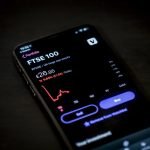Introduction.
Trading in the forex market can feel overwhelming at times. With its constant fluctuations and countless factors driving price movement, it’s easy to feel lost without the right tools. That’s why understanding supply and demand zones is such a game-changer.
These zones help pinpoint where prices are likely to reverse or continue trending, giving you an edge in making trading decisions.
In this guide, I’ll break down supply and demand zones, how to identify them, and why they matter for your trading strategy.
I’ll also answer some common questions about this topic to help you feel confident as you apply these concepts in real trading.
What are Supply and Demand Zones?
At their core, supply and demand zones are areas on a price chart where the balance between buyers and sellers shifts significantly.
- Supply Zone: This is where sellers overpower buyers, causing the price to drop. Think of it as a ceiling where the price struggles to break through.
- Demand Zone: This is where buyers outweigh sellers, pushing the price upward. It acts as a floor where prices tend to bounce back up.
These zones are crucial because they highlight areas of high market interest, often leading to reversals or strong price movements.
Why Are Supply and Demand Zones Important?
Supply and demand zones give traders insight into where big players—like banks and institutions—are placing their orders.
These large orders create imbalances in the market, which is why prices tend to react sharply in these areas.
By identifying these zones, you can:
- Avoid poor entry points.
- Find better opportunities to buy or sell.
- Reduce your risk by placing stop-losses in logical areas.
- Spot potential reversals before they happen.
Understanding these zones doesn’t guarantee success, but it certainly improves your odds.
How Do I Identify Supply and Demand Zones?
Spotting supply and demand zones takes a bit of practice, but once you get the hang of it, it becomes a powerful tool. Here’s a step-by-step guide to help you get started:
1. Look for Sharp Price Movements
The most obvious supply and demand zones are formed after sharp price movements. These rapid moves often indicate strong buying or selling pressure.
- For a supply zone, look for a rapid drop in price from a specific level.
- For a demand zone, look for a sudden and strong price rally.
2. Identify Consolidation Areas
Before these sharp price movements, prices often consolidate for a while. These consolidation areas represent the base from which the price surged or dropped, marking the beginning of a supply or demand zone.
3. Focus on Fresh Zones
Fresh supply and demand zones—ones that haven’t been revisited by the price—tend to be more reliable. When the price revisits these areas, the imbalance between buyers and sellers is often still strong enough to cause a reaction.
4. Use Larger Time Frames
While it’s tempting to focus on smaller time frames, supply and demand zones on larger time frames (like daily or weekly charts) are often more significant. They attract more institutional interest and lead to stronger price movements.
5. Combine with Support and Resistance Levels
Supply and demand zones often align with traditional support and resistance levels. While they’re not the same thing, combining these concepts can help confirm the strength of a zone.
Common Mistakes to Avoid
It’s easy to make errors when you’re new to identifying supply and demand zones. Here are some things to watch out for:
- Ignoring Time Frame: Zones on smaller time frames may be less reliable due to noise in the market.
- Overlooking Fresh Zones: Repeatedly tested zones lose their strength over time.
- Forgetting to Use Stop-Losses: Even the best-looking zones can fail, so always manage your risk.
- Forcing Zones: If a zone isn’t clear, it’s better to skip it than to trade based on weak analysis.
Practical Example
Let’s say EUR/USD has been trending upwards. On a daily chart, you spot a strong rally followed by a short period of sideways movement before another rally.
That sideways movement is the demand zone. If the price revisits this area, there’s a good chance it will bounce back up because buyers are likely to step in again.
On the other hand, if EUR/USD is falling and you see a steep drop after a brief consolidation, that’s your supply zone. When the price retraces to this area, sellers might regain control, pushing the price back down.
Tools to Help Identify Zones
You don’t have to do all the work manually. Here are some tools that can help:
- Charting Platforms: Platforms like TradingView offer excellent drawing tools to mark zones clearly.
- Indicators: While not always necessary, some indicators like Fibonacci retracements can help confirm zones.
- Volume Analysis: Watching volume spikes around certain price levels can help identify significant zones.
FAQs
1. Can supply and demand zones fail?
Yes, no strategy is foolproof. Market conditions change, and a zone that worked in the past may no longer hold. This is why it’s important to use stop-losses and manage risk.
2. How do supply and demand zones differ from support and resistance?
While both concepts highlight important price levels, supply and demand zones focus more on areas of imbalance created by large institutional orders, while support and resistance are more general levels where prices tend to stall or reverse.
3. Should I only use supply and demand zones in my trading strategy?
Not necessarily. These zones work best when combined with other tools like trend analysis, moving averages, and risk management strategies.
4. How long do these zones remain valid?
Zones can remain valid for weeks or even months, but their strength decreases as they are revisited multiple times.
Conclusion
Identifying supply and demand zones is a skill that can transform the way you trade forex. By spotting areas where big players are likely to step in, you can align your trades with the market’s natural flow. Remember, like any trading concept, this takes practice and patience to master.
So, have you started identifying supply and demand zones in your trading? What challenges have you faced, and how have you overcome them? Let’s discuss!





GIPHY App Key not set. Please check settings